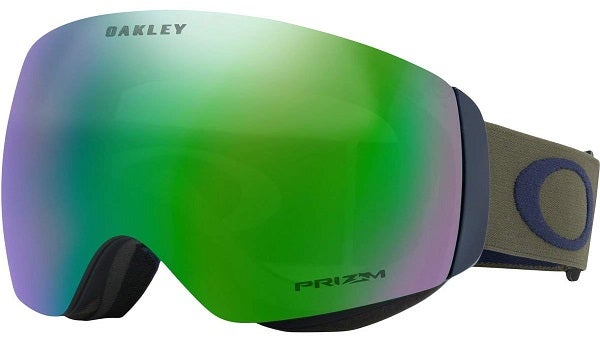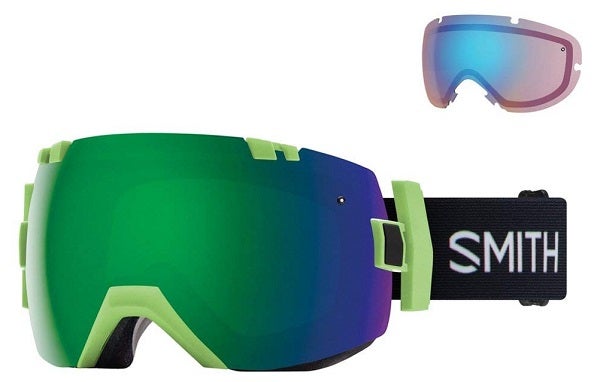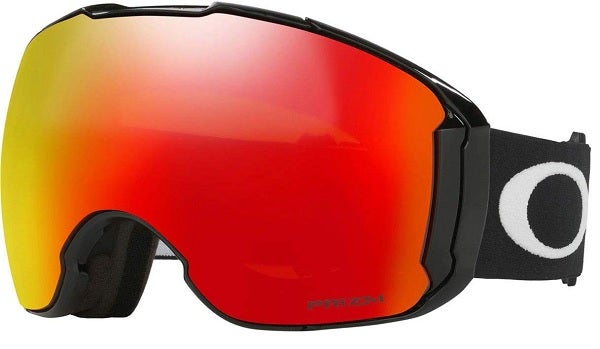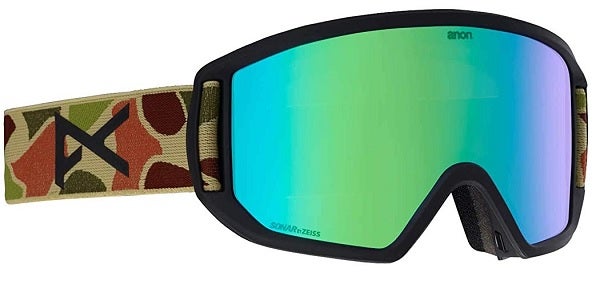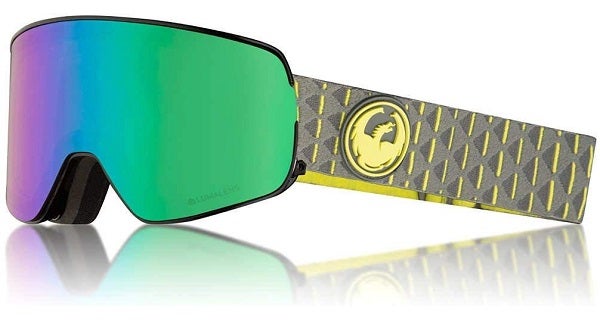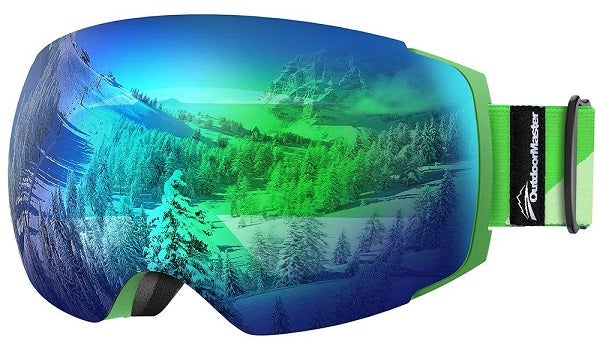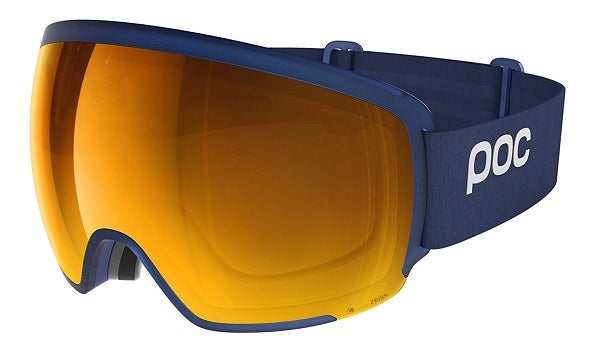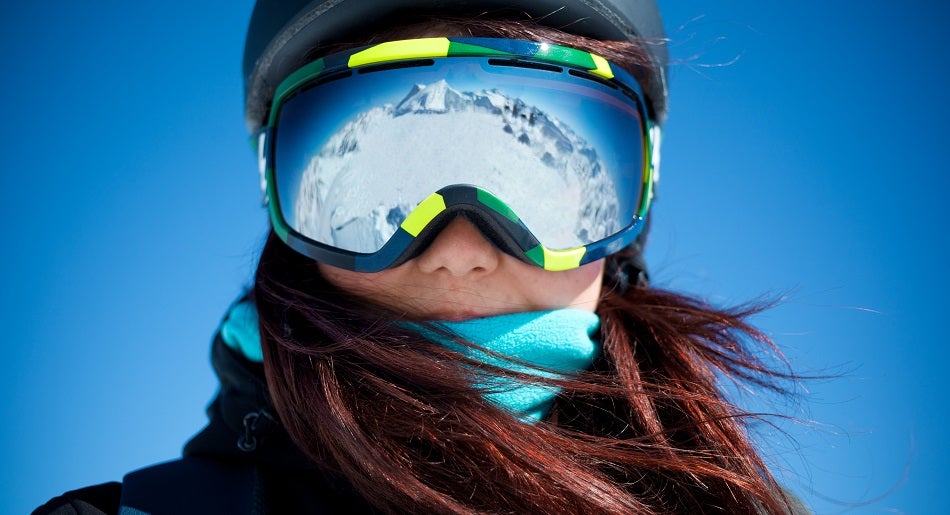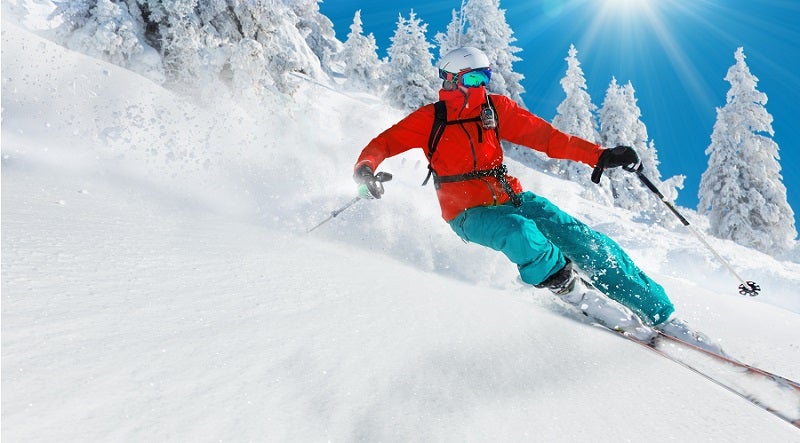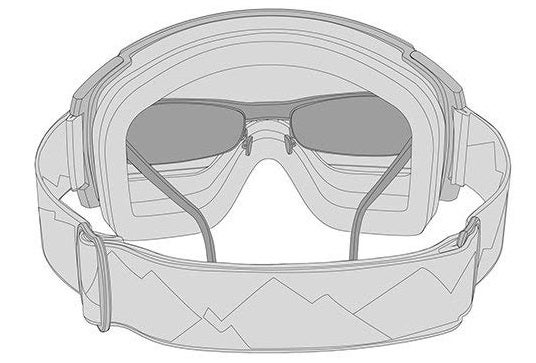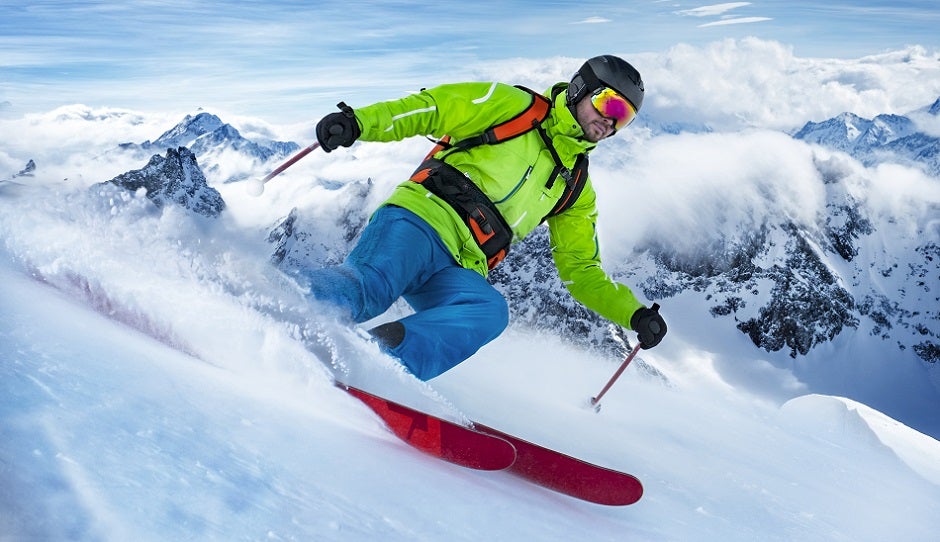
Our Editors independently research, test, and rate what we feel are the best products. We use affiliate links and may receive a small commission on purchases.
Over the years I’ve explained, reviewed, and picked out more ski goggles than I can really count. With hundreds of days on the mountain as a professional alpine ski instructor my clients regularly wanted to know, “what are the best ski goggles?”
Obviously, you’re in the same boat and I’m here to help you through the process. It’s time for a crash course in what makes the good, bad, and the ugly for ski goggles.
Don’t worry, I’m going to help you learn how to choose the right ski goggles for you.
We’ll also present a handful of this season’s top rated ski goggles for seasoned pros or regular joes. That way you can spend less time dealing with online research and more time in the field slashing your way through that gnar!
Best Ski Goggles
For more of my ski gear recommendations, have a look through these popular Outside Pursuits guide links: Ski Jackets, Ski Pants, Ski Helmets, Ski Gloves.
Quick Answer: The 7 Best Rated Ski Goggles
- Oakley Flight Deck XM Snow Goggles
- Smith Optics I/O Goggle
- Oakley Airbrake XL Snow Goggles
- Anon Relapse Ski Goggles
- Dragon Alliance NFX2 Ski Goggles
- OutdoorMaster Ski Goggles PRO
- POC Orb Clarity Snow Goggles
Let’s take a look at the top ski goggles, then we’ll talk about how to choose the right pair for you in our buyers guide.
Ski Goggles Reviews
#1 Oakley Flight Deck XM Snow Goggles
- Rimless frame
- Compatible with most prescription eyewear
- Interchangable lenses
- Dual pane lens with F3 anti-fog
Oakley has been a top name in optics for ages and the Flight Decks are our Editor’s Choice for the best ski goggles on Amazon.
By far one of the most popular spherical lens goggles on the mountain the last few years has been the Flight Deck.
We’ll talk more about it in our guide but the best optical clarity you’re going to get is in a spherical lens. Unfortunately, many cheap manufacturers aren’t making high quality spherical lenses like the Oakley and they warp vision.
That’s never going to be a problem with the proven goggles in Oakley’s line which are supported by the manufacturer’s reputation.
Both dual lens and fog coating on the surface means that you’re almost guaranteed to not have fogging issues which can be dangerous on the mountain.
Plus the popular rimless design leaves more room for peripheral vision so that you’re safe as trees, bumps, and other skiers come from all angles.
Don’t forget that these lenses have the benefit of Oakley’s image improving Prizm tech which sharpens up colors.
Ladies: If your looking for the best women’s ski goggles checkout the Oakley Women’s Flight Deck XM Snow Goggles
Best for skiers who want that big lens look for users who love the name and look of Oakley products quality.
#2 Smith Optics I/O Goggle
- Medium-large fitment with OTG
- Comes with 2 lenses
- ChromaPop lens technology
- Interchangable lenses
While it’s a few seasons old at this point, the I/O goggle remains my all time favorite. Plus, Smith has earned their name in the skiing world for quality products.
Wish I hadn’t lost mine… But what makes them so great?
Smith ships each I/O with two lenses – one for dark days and one for bright days. These lenses are coated for both image clarity with ChromaPop and fog resistance.
Plus the dual pane lens goes above and beyond with a small one-way vent for any water to escape if the lenses ever get breached.
For what it’s worth, I think Smith has some of the sleekest goggle and strap combinations on the mountain right now.
These goggles are, in fact, OTG compatible despite not being the absolute largest on the market. The mid size frame is plenty large for great peripheral vision (I used them for several seasons) but small enough that they’re not comically overwhelming like some goggles.
Like most of the top-line goggles, the I/O goggles have a fully adjustable outrigger.
For skiers who want the best ski goggles for low light conditions with top of the line technology and proven performance.
#3 Oakley Airbrake XL Snow Goggles
- Blocks 100% of UVA, UVA, UVC & Bluelight
- Smaller lens size
- Tons of lens color options
- Dual pane lens
If you want Qakley quality and goggles that are less “bug like” then the Oakley Airbrake Ski Goggles might be for you.
They also come with a price tag that is a bit steep but the quality of the lens becomes apparent when you look through them.
The dual vented lens have an anti-fog coating and the HDO make for awesome vision in any conditions.
They have notches to accommodate most prescription eye wear along with UVA, UVB, UVC and blue light blocking.
The frames are rigid and this becomes very obvious when you change out the lens and the frame doesn’t flex like many cheap goggles will.
The triple layer fleece foam gives a comfortable all day fit while a F2 anti-fog coating keeps the lens from fogging up.
For Airbrakes are for skiers who want the best ski goggles with smaller face sizes, smaller helmets, or a preference to avoid the “bug-like” look of larger goggles.
#4 Anon Relapse Ski Goggles
- Cylindrical lens
- Triple layer face foam
- Anti-fog treatment
- OTG compatible
Anon is a brand that has been cultivating popularity in recent years. WIth the advent of boutique skis, skiers are looking more for other equipment from smaller names.
Anon is one of many smaller names on the scene looking for your attention.
What you’re going to get is an affordable, mid-range goggle that makes some trades in order to save you cash. Skiing on a budget? This might be your ticket.
One of the nice features of this goggle is the spare lens. Not many goggles at this price are going to give you an extra lens.
However, those lenses are cylindrical and not spherical. That means you may have a slightly distorted upper and lower vision.
Compared to spherical lenses the image quality difference is only really noticeable near the edges of your vision. One other drawback is the single pane lens which may be more prone to fogging than others.
Of course, you have to make some sacrifices if you want to keep a few extra bucks in your pocket, right? The Anon Relapses are the best ski goggles under $100.
#5 Dragon Alliance NFX2 Ski Goggles
- Cylindrical lens
- Anti-fog treatment
- SwiftLock lens system
- Frameless design
DA, like Anon, is one of those slightly smaller makers that doesn’t get that much limelight. However, they’re making some good stuff that should probably see more users giving it a serious thought.
Of all the goggles you can get ahold of right now I think the NFX2 are the most true to the frameless ideal.
Right now the “in look” is a huge lens with no frame and these really push that to the extreme while still maintaining a changeable lens.
Personally, I’m not a fan of cylindrical lenses, especially at the $100+ price tag. However, pretty much everything else about this goggle meets criteria and the aesthetics are on point so I’ll let it slide.
These goggles place an emphasis on airflow and venting while relying on the anti-fog coating to keep moisture at bay. While the 100% UV protected lens and micro-fleece foam is up to spec, I wonder about the true value.
The one knock on these goggles are some skiers complain slightly about too much airflow being a problem at speed – it can make your eyes water. The DAs are the best men’s ski goggles for the true frameless look!
#6 OutdoorMaster Ski Goggles PRO
- Spherical lenses
- Anti-fog treatment
- Tons of VLT selections
- OTG Compatible
What would you say if I told you that you can get a super affordable goggle with almost all the features of top manufacturers?
Too good to be true? Possibly, but it seems that way with these.
While I know nothing about the supply chain or the manufacturing process of these uber-cheap goggles, I do know that the specs look fantastic for what you’re paying!
All the features of high end goggles like VLT adjustable lenses, spherical shaping, and UV protection are present here.
There are 20+ lenses to work with that vary in color and performance to suit your taste.
One of the features that is lacking, however, is the adjustable outriggers. In some cases this may cause the goggles to sit away from your face or warp when worn with larger helmets. Some skiers are picky about this and some are not.
Overall I don’t see much to pull these goggles down, especially when we factor in the affordability factor. I would say these are the best ski goggles under $50!
#7 POC Orb Clarity Snow Goggles
- Maximized field of view
- Zeiss lens collaboration
- Spektris mirror coating
Okay, I’ll admit this is one of the most expensive goggles on our list.
However, I think POC has come a long way as a company and these goggles are about as top of the line as they come. Get ready to bit the bullet and ski with the best!
POC worked with Carl Zeiss to create the lenses on this goggle. That means for you that the Spektric mirror coating for each color is engineered to work with the lens base tint to enhance colors.
Every color lens from them is made individually for high performance.
Among other features is the dual compound frame which is flexible but durable. It’s been carved away in the corners and wrapped around the sides as far as possible to open up peripheral view.
This isn’t new in goggle manufacturing, but it adds precious millimeters of view.
Like the name implies, these goggles are made to make sure you can see every detail with a huge focus on lens coatings.
For skiers who the best ski goggles for glasses to gain the most crisp visual clarity available and can afford spending a bit more for quality!
Ski Goggles Comparison Table
| Ski Goggles | Style | Optics | Lens | Rating | |
|---|---|---|---|---|---|
| Oakley Flight Deck XM Snow Goggles | Spherical | Prizm | Interchangable | 4.0 / 5.0 | |
| Smith Optics I/O Goggle | Cylindrical | ChromaPop | Interchangable | 4.5 / 5.0 | |
| Oakley Airbrake Ski Goggles | Spherical | Prizm | Interchangable | 4.5 / 5.0 | |
| Anon Relapse Ski Goggles | Cylindrical | Anon Integral Clarity Technology | Fixed | 3.9 / 5.0 | |
| Dragon Alliance NFX2 Ski Goggles | Cylindrical | Optically-correct, 100% UV protection | Fixed | 4.0 / 5.0 | |
| OutdoorMaster Ski Goggles PRO | Spherical | Mirrored, 100% UV protection | Interchangable | 4.4 / 5.0 | |
| POC Orb Clarity Snow Goggles | Spherical | Zeiss Clarity lens | Fixed | 5.0 / 5.0 |
Author’s Expertise / Why You Should Trust Our Reviews
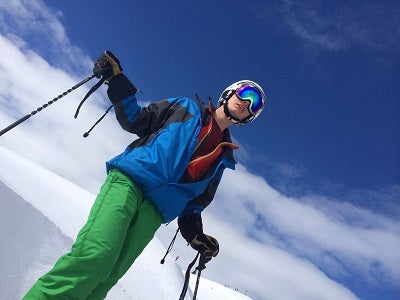
I started writing online for my own outdoor sports blog in 2010. Right out of the gate I landed opportunities to test gear for Road ID, Hydrapak, Wolverine, Helle Knives, Pearl Izumi, and GU Energy. Those were the days when growing a no-name blog was easy. Today niche blogging is a different story.
In 2012 I left Central Wyoming College with a degree in Outdoor Education and Leadership. Soon after, I was on a month-long expedition with the National Outdoor Leadership School’s Outdoor Educator Course which helps would-be outdoor guides ascend from “aspiring” to “inspiring”.
Between here and there I’ve participated in and spoken at length about outdoor pro-deal programs for companies like Patagonia, Smith Optics, Giro, Therm-a-Rest, Platypus, MSR, Columbia, and many more. I still work closely with tons of outdoor gear companies to review and analyze products. If you have a product opportunity you’d like to discuss, please review my guidelines and contact me here.
After several seasons of guiding backpacking trips and working as a certified Alpine Ski Instructor at Deer Valley Resort in Park City, UT for several seasons, I had to move on. As any educator will tell you – teaching doesn’t pay the bills very well.
In 2016 I began building my freelance writing career as readers and other bloggers reached out to me for help with technical outdoor sports content strategy for online businesses. Within weeks I was overloaded with requests for freelance writing and my new career blossomed.
2018 saw the launch of Hike With Less, my ultralight backpacking partnership program with Dustin Walker.
How to Choose the Best Ski Goggles – Buyers Guide
- Optics Technology
- Lens Shapes
- Fit and Sizing Ski Goggles
- Visible Light Transmission (VLT)
- Ventilation and Fogging
- Interchangeable Lenses
- Foam Padding Types
- OTG Goggles
- Helmet Compatibility
- FAQs For Ski Goggles
- Best Ski Goggle Brands
Optics Technology
When it comes time to pick out a ski goggle that really dials in your game, you’ve got a lot to choose from. Every year manufacturers are rolling out new and better tech to sharpen and protect your vision on the mountain.

ChromaPop
This technology is specifically offered by Smith Optics (one of my favorites). ChromaPop essentially uses the lenses to filter out a couple of very narrow band light wavelengths. By doing this it eliminates color crossover that can be misinterpreted by the eye.
That’s the long way of saying that it just makes colors look more vivid and sharp. Boom!
Prizm
This Oakley tech essentially serves the same function as ChromaPop. The lenses filter and enhance certain colors of light which helps improve optical clarity and enjoyment of color.
Oakley tries to tailor their Prizm lenses to specific sports or environments where different colors are ideal. That means freshwater fishing lenses may be slightly different than alpine winter lenses.
Mirrored Lenses
These bad boys just look cool, essentially. Okay fine, that’s not their only purpose but they do look damn good!
Mirrored lenses do a great job at reflecting light which means less light coming into the goggle. This is ideal for sunny winter days when the alpine sky and the snow combine to make a very harmful reflective surface for the sun’s rays.
Mirrored lenses struggle on overcast or dark days on the mountain. Because they usually block so much light, they can make the mountain look flat which means you don’t realize how big that mogul or rollover is coming up!
Polarized
These lenses have been popular for ages. Essentially they work to block light rays traveling in certain orientations. This means light reflecting off surfaces is diminished or eliminated.
What that means for you is less glare on the snow, less glare on water, and less glare on windshields or other shiny surfaces.
If you’re wondering whether or not you have polarized glasses, just look at a digital watch face with the goggles on. Rotate the watch face and it should turn fully black at certain points when the polarized lenses match the orientation of the light emitted by the watch. Ooh! Ahhh!
Photochromic
This is a big mouthful of science word that really just means “auto darkening” in our world. Of course I’m sure the scientists in the crowd are insulted by my gross simplification of the term, so I apologize.
These lenses are able to react to sunlight and darken themselves based on the amount of light being received. When indoors they will eventually turn clear or brighter. When outdoors they slowly darken to adjust to the bright sunlight.
You’ve probably seen this tech being used on glasses, as it’s very popular. I think it’s even more helpful to skiers because it means less need to change lenses when conditions change.
If clouds roll in and the mountain becomes dark and immersed in a nasty storm, your lenses will lighten up on their own so you can see better. I can’t tell you how many times I’ve wished my lenses would do this for me. I just never bought photochromic because it’s quite pricey!
Lens Shapes: Cylindrical vs Spherical
There are two main type of lens shapes in the the ski goggle world. You’ve got the cheaper version and the more expensive version. The difference is in optical clarity.

Cylindrical
These lenses wrap around the head in a single direction. They bend from left to right to fit the curvature of your face and that’s it. Until recently these were the only type of ski goggle being made, but modern tech has changed that playing field!
Make no mistake, you can still ski just fine with cylindrical lenses, but you won’t have the optical clarity of spherical.
Spherical
These lenses wrap from side to side and top to bottom. They have a slight curve in all directions like a big bubble.
Why? Because, like your eye, the lenses are designed to receive light coming from all directions without warping the image you see. Lenses that bend in only one direction, like cylindrical lenses, invariably warp some part of the image and distort your vision.
Spherical lenses have become wildly popular thanks to their falling price and ease of access in recent years. The cool new trend is in large spherical lenses which resemble astronauts, fighter pilots, and… bugs. But I gotta say, they do look cool and work great for peripheral vision!
When it comes down to it, I recommend spherical lenses unless you’re just looking for the absolute cheapest ski goggles to get started.
Fit and Sizing Ski Goggles
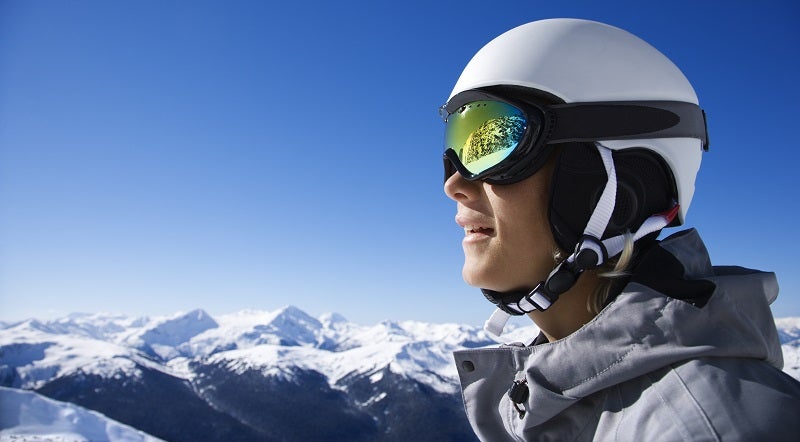
Today, any ski goggle you can find will be made to fit heads or helmets. However, it’s not always perfect.
In today’s ski world almost everyone is skiing with a helmet. That means goggles have grown larger with straps to accommodate.
I have found in the past that some goggles actually have such large straps that it can be hard to size them down to fit just your head if you end up wanting to ski without a helmet at some point (like spring skiing on the bunny slope).
Usually ski goggles don’t have a min and max circumference, so you’ll have to read some reviews and order based on others’ experiences.
One note about goggle clips: you will love them or hate them. I personally don’t like clips on the back of my goggles because they can occasionally come undone and then your goggles may fall off in the lodge or on the slopes.
Once my goggles are one, I buckle them to the helmet and they just stay there until the end of the day. You may or may not operate this way.
Visible Light Transmission (VLT)
This isn’t really any different than it sounds. When you go to pick out a pair of ski goggles, you’ll usually see a VLT number rated in percentage. The higher the percentage, the most light that is let through.
- 10-20% is good for sunny days
- 21-60% is good for partly sunny or overcast days
- 61-90% is good for overcast and stormy days
Of course, the amount of light that gets let through is going to depend on several factors. In general, however, you can go by the manufacturer’s specs and select a VLT lens that works for the conditions you usually ski in.
If you want a lens that is good in full sun, it won’t be good when it’s overcast and vice versa. That’s why photochromic lenses are popular for this reason as they adjust VLT on their own!
The other common solution is to work with an interchangeable goggle which allows you to swap lenses on the fly. These can be handy but I’ll admit, I find I change the lenses less than I’d like because it’s a hassle and a real pain to do while on the mountain.
Ventilation and Fogging
These are both big problems with most ski goggles. Fortunately, there are several solutions.
Look for dual pane lenses if you’re trying to avoid fogging which occurs all too often on the mountain. These lenses resist fogging by trapping a layer of air between two panes of lenses. If water manages to get between the sealed panes, however, you’ll have to replace them.
Another solution is chemical coatings. Many dual pane lenses also use a fog resistant coating to further minimize fogging. Together you’ll find your goggles are nearly fog proof 99% of the time, even in the worst pea soup conditions.
Pro tip: Keep neck warmers and balaclavas out of your goggles! Kids, especially, tend to tuck them up under the foam of the goggle to keep them in place which results in moisture from breathing being introduced inside the goggles. This will always lead to fogging no matter how good the lenses are!
Interchangeable Lenses
We mentioned these briefly earlier but we’ll go into more detail here. Todays interchange lenses are improving rapidly. The idea is to be able to quickly release and replace a goggle lens on the fly.
This allows skiers to keep two or more different types of lenses on hand at all time to adapt to changing light conditions.
I have found over the years that they are rarely easy enough or quick enough to reliably change on the mountain. Usually you need to change them when bad weather rolls in, and the last thing you want to do is stand on the side of the ski run with your gloves and goggles off while wind and snow whips in around you and the skies darken.
They can be helpful, however, if you keep a change of lens in your pocket and swap it out in the ski lodge before heading back out if conditions have changed.
Foam Padding Types
There have been tons of improvements in recent years with goggle padding. The most important is in the 3-layer foam that’s currently being used.
Older goggles were made with just a single layer of open cell foam which absorbs sweat and deteriorates over time. This is just gross and feels awful. You know this feeling if you grew up with older goggles.
Today’s goggles still use open cell foam which is the first layer. Then a softer foam is added before a layer of soft, absorbent micro fleece. Together these layers make a soft and sweat resistant goggle seal!
Rarely will you encounter a modern goggle that isn’t made this way. Unless you’re looking for the absolute cheapest goggle you can find, I would avoid poorer foam padding.
Over The Glasses (OTG) Goggles
Over the glasses goggles are made to… fit over glasses. This was a problem for people with glasses for years and only recently has it really been solved well.
Most major manufacturers offer some type of OTG goggle that will accommodate glasses underneath. Rarely, but on occasion, some larger glasses may not full fit. Slim glasses usually fit without a problem, however.
I personally ski with an OTG goggle, even though I don’t use glasses. You don’t need glasses to use an OTG goggle so if you see that designation, don’t worry – you can still use ‘em!
Helmet Compatibility
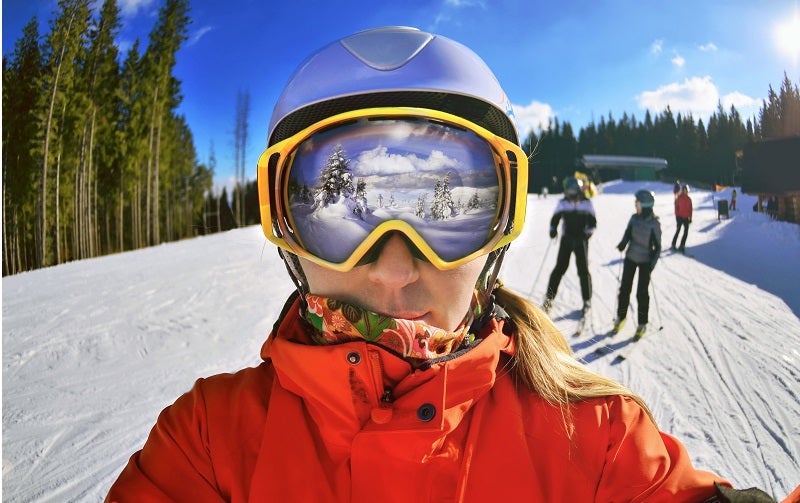
There are a couple of helmet specific options you should look for. Fortunately, most makers include these but watch out on cheaper models – they might not be there.
Outriggers are the places on the side of the goggles where the straps attach. These are ideally adjustable on helmet compatible goggles. That means the can adapt to different sizes without flexing the lens frame itself which changes the shape of the goggle.
Additionally, these outriggers should be flexible up and down to adjust for the height of the helmet strap. In some cases these two-way adjustable outriggers are called “dual axis” or other fancy names.
Without adjustable outriggers, goggles will ride funny on most helmets unless they’re a perfect match to both the helmet and your face.
FAQs About Ski Goggles
Q: What are the best ski goggles for beginners?
A: Beginners should keep their costs low because you’ve already got expensive skis, boots, and other equipment to buy. In my view a helmet and good goggles are not optional, they’re necessary.
However, if you happen to not enjoy skiing as much as you thought you would, you might have wasted a lot of money if you buy top of the line.
For that reason I recommend a high quality spherical or cylindrical goggle. Something like the Outdoor Master goggles on our list would make great goggles for beginners.
Q: What is the best factor to look for in a ski goggle?
A: For me, I’d sacrifice a lot of things for peripheral field of view and fog-proof features. When skiing the most dangerous accidents on the mountain occur from skiers colliding with one another. While good goggles can’t prevent this, a wide peripheral view can help make you more aware of what’s around you.
Q: Are interchangeable lenses worth it?
A: I have mixed feelings about these. Overall I’d say they’re worth while. Once you have a pair of goggles you love, being able to change lenses to adapt to overcast or sunny conditions helps you get more mileage out of them.
Make no mistake – using the right lenses is vital to staying safe. Dark lenses on overcast days will make the snow look flat and can easily hide bumps or rollers that can send you off balance and into other skiers, trees, or just on a nasty digger.
Get interchangeable lenses and keep the spare lens in your inside coat pocket, well protected in the goggle case so they don’t scratch. If a storm rolls in, head to the nearest lodge and swap out lenses and then hit the mountain again!
Q: Are there differences in women’s ski goggles?
A: Ladies, you’re both in luck and out of luck at the same time.
Women’s ski goggles are physically no different from men’s. However, they tend to be a little different in styling.
Generally women’s goggles, for whatever reason, are a bit smaller. They also most often feature lighter colors in the frame and lenses. Fortunately, there’s really no reason you can’t just buy a men’s pair if you want.
When you get in the store and try on a few pairs don’t be afraid to try on men’s and women’s goggles alike. Some goes for you, gentlemen – if you see a pair you like and they fit, who cares what gender they’re supposed to be?
Q: Can I buy replacement straps for my goggles?
A: Usually not. It actually sucks, too, because elastic tends to be one of the first parts to wear out on a good pair of goggles.
Fortunately, you can still hang on to the lenses and just replace the frame altogether. Sometimes you can reach out to support at the company and ask for a frame – they’ll charge you a lower price than if you buy a new goggle set altogether.
If that’s not possible, you’ll just have to buy new goggles and you’ll have the extra lenses from your last pair as backup.
Q: What lens colors do you use?
A: For about 5 years I was spending 100+ days a season on skis. Literally thousands of hours spent in goggles on the mountain.
During that time I’ve learned that you really only need about 2 lenses. I carry a reflective low VLT lens for bright days and wear this about 80% of the time.
The rest of the time I switch to a high VLT lens which lets through a lot more light and usually I prefer a high contrast color like yellow. This helps terrain, bumps, and obstacles pop during cloudy or foggy times when the lighting is really flat.
One of my biggest injuries was on a foggy, pea soup day when I caught an edge on a slush pile during spring skiing. The lighting was so flat I couldn’t even tell the bump was there until it was too late.
Good lens choices help avoid these problems.
Best Ski Goggle Brands
 This is a common question and there is no easy answer. To some degree it is subjective, if you ask 1o skiers what the best brands are you will probably get 5-6 different brands. There are some that always seem to come up so I will list those here:
This is a common question and there is no easy answer. To some degree it is subjective, if you ask 1o skiers what the best brands are you will probably get 5-6 different brands. There are some that always seem to come up so I will list those here:
- Smith Optics – Founded in 1965 by Dr. Bob Smith who was not satisfied with then current goggle technology. Since they have been around for over 50 years they have it figured out.
- Oakley – Well know for their sunglasses, they have taken their optics technology into ski goggles and have an excellent lineup.
- Outdoor Master – A newcomer to ski goggles, they make some of the best budget priced goggles on the market.
- Bolle – This French company makes a wide variety of ski equipment from goggles to ski helmets, and makes some of the best budget priced options available.
Caring For Your Goggles
Once you have chosen your goggles, you need to care for them. Here are some tips: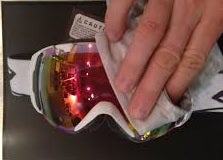
- Even scratch resistant goggles will scratch if you lay them face down on a table, even the wood picnic style found at ski lodges can scratch them. Lay them foam side down.
- When you’re done skiing for the day, allow them to dry before storing them. Also be sure to store them in the carry case they came with to protect them.
- When cleaning them or wiping off condensation, be sure to use a SOFT cloth, not a polyester base layer. It can either scratch them and/or remove the anti-fog coating.
Some Tips to Avoid Goggle Fogging
Even goggles sold as anti-fog can still fog. If you’re still having problems, try these tips:
- Wipe any snow off of the vents to keep them open.
- Don’t put goggles on your forehead when stopped, This assumes you are not wearing a helmet.
- If they do get fogged, don’t wipe them with your glove, either put them in jacket pocket or go into the lodge.
- You can try shaking them, it may move enough air over them to defog them.
Conclusion
Ski goggles are a personal choice just as much as your skis, helmet, and jacket. They need to work for you if you have glasses or other needs. Plus, you need goggles that balance the tech you want and the budget you’re willing to meet.
Overall there’s a goggle on our list that can go home with anyone and make it on the mountain every time. Goggles are pricey for great ones, but the difference in your enjoyment and safety on the mountain when you literally see what you’ve been missing will be a game changer.
Take it from me – it’s worth making the investment in quality ski goggles. You can’t ski what you can’t see.
I hope this guide was helpful for finding a good pair of ski goggles to fit your needs. If you want to comment or recommend a pair of goggles I didn’t include, please use my contact form to get in touch.
New to skiing? See my beginners guide to skiing for tips and advice.
Have fun and and be safe!
How We Researched
To come up with the best ski goggles, we researched a variety of sources for reviews such as REI, Backcountry, Moosejaw, EVO along with our own personal experience.
We also consulted online magazines for product research and reviews to get as much unbiased information as we could. To help weed out fake reviews we used Fakespot.com to make sure we only looked at genuine reviews.
With so much quality gear available, we had to narrow it down based on what we felt were the best options were for the price. The author, Casey Fiedler was a full time ski instructor for Park City and The Canyons in Utah.
To help narrow down the selection he used his personal experience along with recommendations from fellow ski instructors.
After extensive research, we came up with our list to help you choose the right one for you.
Sources

